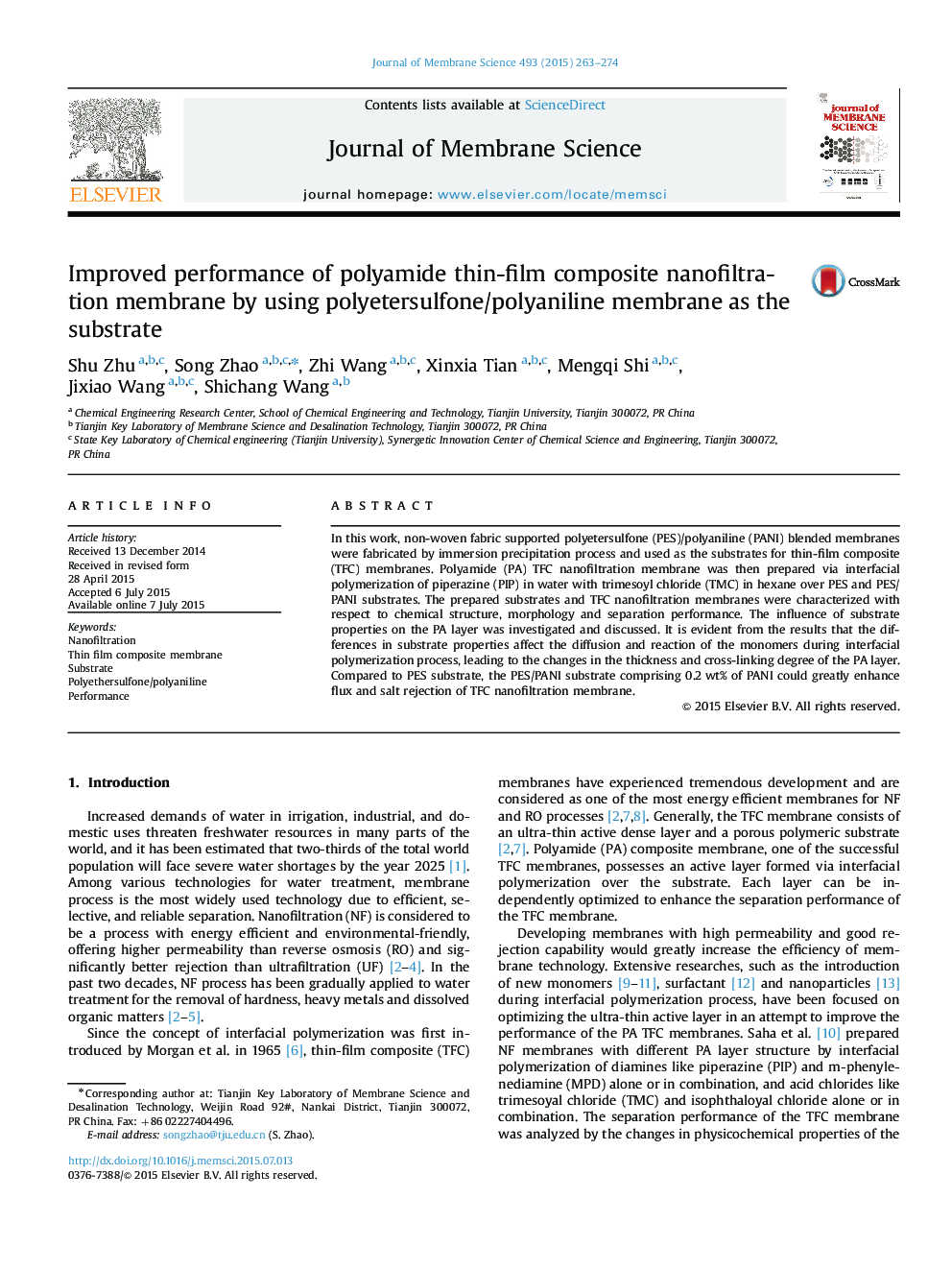| Article ID | Journal | Published Year | Pages | File Type |
|---|---|---|---|---|
| 7021015 | Journal of Membrane Science | 2015 | 12 Pages |
Abstract
In this work, non-woven fabric supported polyetersulfone (PES)/polyaniline (PANI) blended membranes were fabricated by immersion precipitation process and used as the substrates for thin-film composite (TFC) membranes. Polyamide (PA) TFC nanofiltration membrane was then prepared via interfacial polymerization of piperazine (PIP) in water with trimesoyl chloride (TMC) in hexane over PES and PES/PANI substrates. The prepared substrates and TFC nanofiltration membranes were characterized with respect to chemical structure, morphology and separation performance. The influence of substrate properties on the PA layer was investigated and discussed. It is evident from the results that the differences in substrate properties affect the diffusion and reaction of the monomers during interfacial polymerization process, leading to the changes in the thickness and cross-linking degree of the PA layer. Compared to PES substrate, the PES/PANI substrate comprising 0.2Â wt% of PANI could greatly enhance flux and salt rejection of TFC nanofiltration membrane.
Related Topics
Physical Sciences and Engineering
Chemical Engineering
Filtration and Separation
Authors
Shu Zhu, Song Zhao, Zhi Wang, Xinxia Tian, Mengqi Shi, Jixiao Wang, Shichang Wang,
